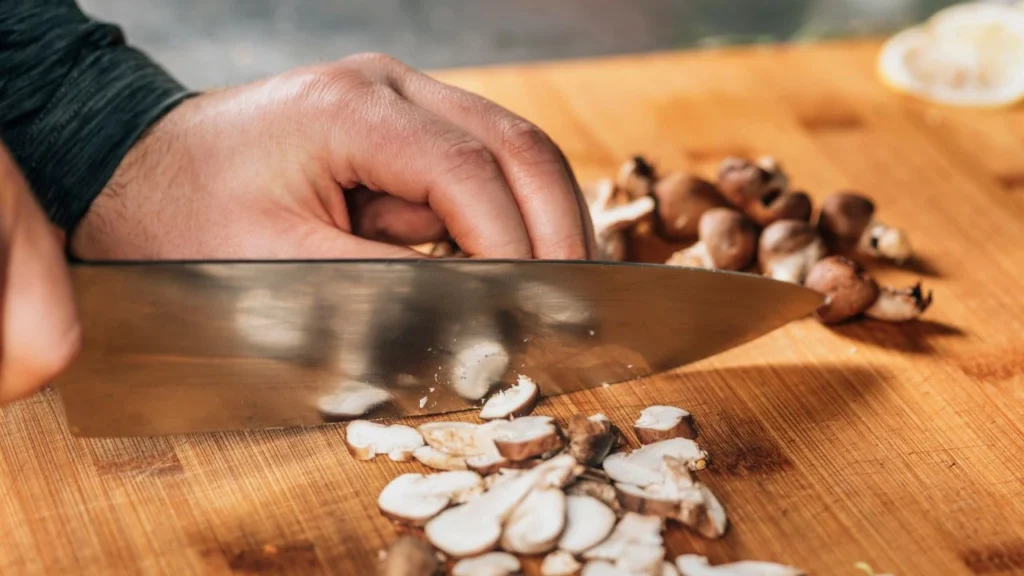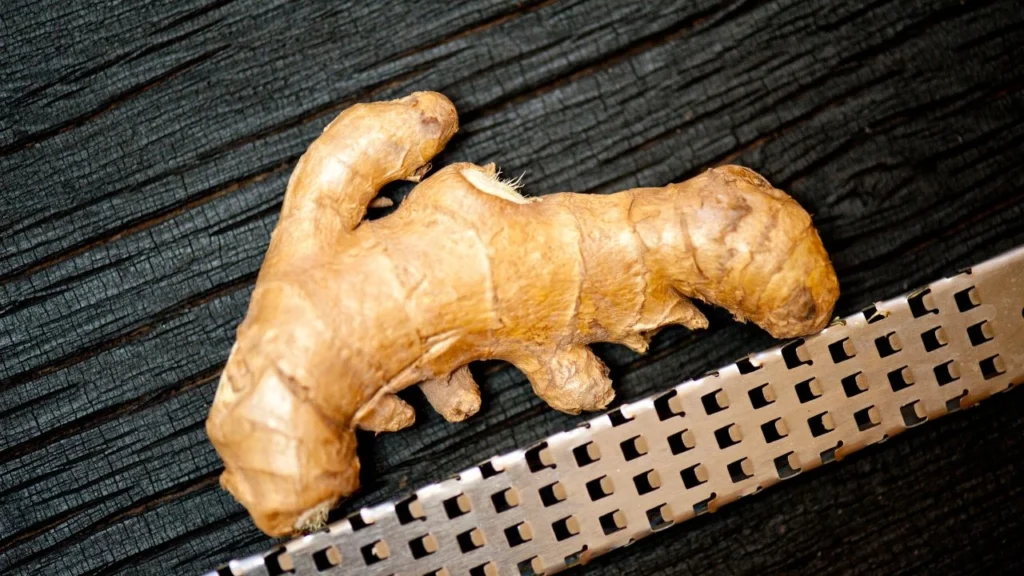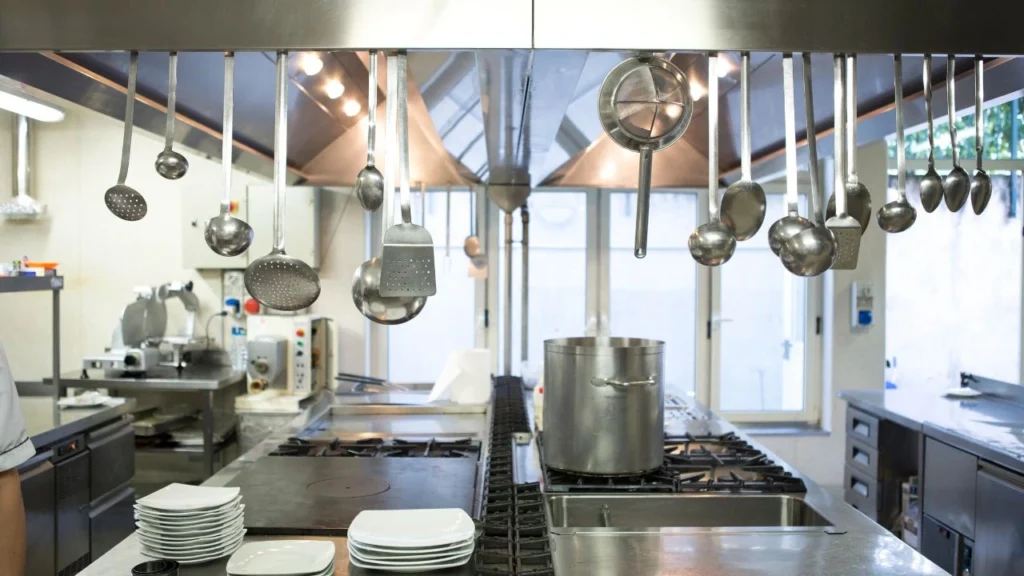Having the right kitchen gadgets can make all the difference in cooking, whether you’re running a busy restaurant or preparing meals at home. The right tools save time, improve efficiency, and elevate the quality of your dishes, turning cooking into a smoother, more enjoyable process. In this article, we’ll explore the must-have gadgets that every professional or home-based chef should consider.
The Growing Popularity of Professional-Grade Tools
In today’s culinary world, even home cooks are embracing tools once reserved for professional kitchens. A recent survey found that 67% of Americans cook at home three or more times a week, highlighting the increasing focus on high-quality, homemade meals. At the same time, over 80% of restaurant owners have adopted advanced kitchen technology to improve efficiency and consistency, making these tools an industry standard. Whether you’re perfecting your signature dishes at home or managing a commercial kitchen, the demand for professional-grade gadgets is higher than ever.
How the Right Tools Transform Your Cooking
Kitchen gadgets do more than just save time—they enhance the entire cooking experience. Precision tools like knives and thermometers ensure accuracy, while appliances like sous vide machines and steam ovens make advanced techniques accessible. For chefs in fast-paced kitchens, these tools streamline processes and allow for better consistency. At home, they help turn ordinary meals into restaurant-quality dishes, making cooking more rewarding and enjoyable for chefs of all skill levels.
Essential Knives for Every Kitchen

The first tools that every serious chef needs are quality knives. A good knife can save you time, improve your cutting precision, and make it easier to create beautiful, tasty dishes. Chefs know that the best knives offer better balance, a sharper edge, and higher-quality steel that lasts longer. Professional chef knives are often made with steel that holds a sharp edge for a long time and have designs made to handle constant use.
- Chef’s Knife:
The chef’s knife is the most important knife in the kitchen. It’s usually about 8 to 10 inches long, and it can handle many tasks like chopping herbs, slicing vegetables, and cutting meat. With its curved blade, you can rock it back and forth on your cutting board to make quick, even cuts. A good chef’s knife will feel balanced in your hand and help you work faster and more safely. - Paring Knife:
A paring knife is a small knife, usually about 3 to 4 inches long. It’s perfect for peeling fruits and vegetables, slicing small items like garlic, or making detailed cuts. Paring knives let you handle delicate jobs that need a smaller, more controlled blade. - Serrated Bread Knife:
A serrated bread knife has a long blade with tooth-like edges. It’s not just for bread; it also works great on foods with a hard outside and a soft inside, like tomatoes or certain pastries. The serrated edges help you slice without squashing what you’re cutting.
When you invest in high-quality knives, you’re saving time and improving your cooking results. Good knives stay sharper longer, need fewer replacements, and give you cleaner, more professional cuts.
Cutting Boards

A good cutting board might not get as much attention as a fancy knife, but it’s just as important. Having multiple cutting boards is key. For example, you might use one board for raw meats, one for vegetables, and another for bread. This helps prevent cross-contamination and keeps your kitchen safe.
- Wooden Cutting Boards: End-grain wooden boards are popular with many professional chefs because they are gentle on knives and last a long time. The wood fibers help keep your knife sharper and can “heal” small cuts over time.
- Plastic Cutting Boards: Plastic boards are easy to clean and are often dishwasher-safe. Some chefs like using color-coded plastic boards to keep track of which board is used for which type of food. For example, a red board for raw meat and a green board for produce.
- Bamboo Cutting Boards: Bamboo boards are eco-friendly and last a long time. They’re also quite gentle on knives and have a natural look that many chefs enjoy.
No matter which material you choose, make sure to clean and sanitize your cutting boards after each use. In a commercial kitchen, you want boards that can handle heavy daily use without warping or cracking. Good boards can help you keep your kitchen safe and running smoothly.
Must-Have Cooking Utensils

When you’re working in a busy kitchen, the right utensils can make all the difference. Having a well-stocked set of tools ensures that you can cook efficiently without scrambling to find what you need.
- Wooden Spoons:
Wooden spoons are perfect for stirring soups, sauces, and stews. They won’t scratch your cookware, and they don’t transfer heat as quickly as metal spoons. - Silicone Spatulas:
These spatulas are heat-resistant and flexible. They help you scrape every last bit of batter or sauce out of a bowl. In a restaurant setting, this reduces food waste and saves money. - Tongs:
Tongs are like an extension of your hand. They let you flip, grab, and move food without burning yourself. Look for tongs with a good grip and heat-resistant materials. - Whisk:
A whisk helps you mix ingredients quickly and evenly, whether you’re whipping up a salad dressing or beating eggs for an omelet. - Spider Strainer:
This tool has a wide, shallow basket and a long handle. It’s great for fishing out dumplings, pasta, or fried foods without scooping up too much oil or water. - Microplane Grater:
A microplane grater is perfect for grating hard cheeses, zesting citrus, or shredding garlic and ginger. It’s small, easy to use, and makes your dishes more flavorful. - ‘Hoak’ Ladle (Cantonese Ladle):
This versatile ladle can be used to make soups, prepare sauces, stir-fry dishes, deep-fry items, and measure ingredients. In Cantonese kitchens, it’s a must-have tool that does the work of several utensils.
These tools help you work faster and more accurately. High-quality utensils last longer and won’t bend or break when you apply force.
Essential Cookware for Every Chef

Great cookware is worth the investment. The right pots and pans heat evenly, last for years, and help you cook dishes to perfection. Professional chefs know that spending a little more now can save you money (and headaches) later.
- Cast Iron Skillet:
A cast iron skillet can handle high heat and is great for searing steaks, browning chicken, or baking cornbread. Over time, it develops a natural non-stick surface. - Stainless Steel Pots and Pans:
Stainless steel is tough, doesn’t rust, and spreads heat evenly. It’s great for making sauces, boiling pasta, or preparing delicate dishes that need precise temperature control. - Non-Stick Pan:
A good non-stick pan lets you cook foods like eggs or fish without them sticking. This makes cleaning much easier and helps keep delicate foods intact. - Dutch Oven:
A Dutch oven is a heavy pot with a tight-fitting lid. It’s perfect for slow-cooking stews, braising meats, or making soups. It helps lock in flavor and moisture. - Sheet Pans:
Sheet pans are versatile. You can use them for roasting vegetables, baking cookies, or even catching drips under casseroles. Having a few sheet pans on hand makes your kitchen more flexible. - Cocotte:
This is a popular tool among Michelin-starred chefs. A cocotte is like a small Dutch oven used for sauces, roasting meats, or slow-cooking smaller dishes. It’s stylish, durable, and perfect for serving at a restaurant table.
Time-Saving Kitchen Appliances
In a busy kitchen, appliances that save time and energy are priceless. These machines help you work smarter, not harder, and allow you to focus on the final taste and presentation.
- Food Processor:
A food processor can chop, slice, and puree ingredients in seconds. It’s great for making pesto, hummus, or chopping vegetables for large batches of soup or salsa. - Stand Mixer:
A stand mixer is perfect for mixing dough, beating egg whites, or whipping cream. In a professional kitchen, it can handle large volumes, saving time and your arms. - Immersion Blender:
This handheld blender lets you puree soups directly in the pot, saving you from transferring hot liquids to a countertop blender. It’s also great for making smooth sauces and dressings. - Instant Pot or Pressure Cooker:
These devices cook food quickly by trapping steam and pressure inside. You can cook tough meats or dried beans in a fraction of the time, making it easier to prepare slow-cooked dishes on the fly. - Steam Convection Oven:
A steam convection oven allows for low-temperature and even overnight cooking. This is especially handy in commercial kitchens where you need to prepare dishes in advance without losing flavor or moisture. - Sous Vide Machine:
Sous vide machines cook food at exact temperatures in a water bath. This method helps maintain moisture, tenderness, and flavor. Perfectly cooked steaks and fish can be ready whenever you need them.
Precision Tools for Accurate Cooking
Cooking is not just an art; it’s also a science. Professional chefs rely on precision tools to ensure consistent results. These tools help you measure, time, and control every step of the cooking process.
- Digital Kitchen Scale:
A digital scale helps you measure ingredients by weight instead of volume. This improves accuracy, especially in baking, where precise amounts matter a lot. - Instant-Read Thermometer:
This thermometer gives you a quick temperature reading so you can tell when your meat, poultry, or fish is cooked to the right degree of doneness. - Measuring Cups and Spoons:
Even in a commercial kitchen, you sometimes need exact measurements. Measuring cups and spoons ensure that your recipes come out the same every time. - Probe Thermometer:
A probe thermometer stays in your food while it cooks, letting you track the temperature without opening the oven or grill. This helps maintain proper internal food temperatures and prevent food-borne illnesses.
These precision tools let you produce meals with consistent taste, texture, and safety. They are especially important for professional chefs who can’t afford mistakes when serving paying customers.
Investing in Your Culinary Journey
Whether you’re a restaurant owner, a kitchen manager, or a passionate home cook, having the right kitchen gadgets can lift your cooking to a whole new level. High-quality knives, cutting boards, utensils, cookware, appliances, and precision tools all work together to improve your culinary craft.
Investing in these tools is an investment in your own cooking skills and passion for food. Start by picking the tools to make the biggest difference in your daily work. Maybe it’s a better chef’s knife or a solid cutting board to keep your workspace clean and safe. Or perhaps it’s time to add a sous vide machine or a steam convection oven to increase efficiency and offer new menu items.
Don’t forget that you also need to care for your tools. Regular cleaning, sharpening knives when needed, and following maintenance instructions will help these tools last for many years. Even commercial-grade equipment can make a difference in a home kitchen, allowing you to enjoy the same quality and durability that professional chefs rely on.
At the end of the day, the tools you choose can transform your kitchen from a simple cooking space into a place of creativity, speed, and quality. They can help you serve customers delicious meals more quickly and with better consistency, or they can help you impress your family and friends with your improved cooking skills at home.
Take a look around your kitchen today and think about what you might need. With the right gadgets, you can cook faster, safer, and better—turning every meal into a memorable culinary experience.
FAQ
Which commercial kitchen gadgets are considered most valuable by professional chefs?
Professional chefs value gadgets like food processors, immersion blenders, sous vide machines, and steam convection ovens for their ability to save time, ensure consistency, and deliver high-quality results.
How do probe thermometers differ from instant-read thermometers?
Probe thermometers stay in the food during cooking, providing ongoing temperature readings, while instant-read thermometers offer quick, one-time readings when inserted.
What are the latest technological advancements in commercial kitchen gadgets?
Smart appliances with Wi-Fi connectivity, automated cooking systems, and precision tools like programmable sous vide machines and advanced steam ovens are the latest innovations in commercial kitchen gadgets.
How can home cooks benefit from using commercial-grade kitchen gadgets?
Home cooks can achieve faster prep, professional-level results, and access advanced cooking techniques with tools like high-performance blenders, durable cookware, and sous vide machines.
What are the most innovative kitchen gadgets used in Michelin-starred restaurants?
Michelin-starred restaurants often use cutting-edge tools like thermal immersion circulators for sous vide, rotary evaporators for flavor distillation, and specialized plating tools for intricate presentations.
Resources
https://www.foodandwine.com/lifestyle/kitchen/chef-must-have-kitchen-tools






